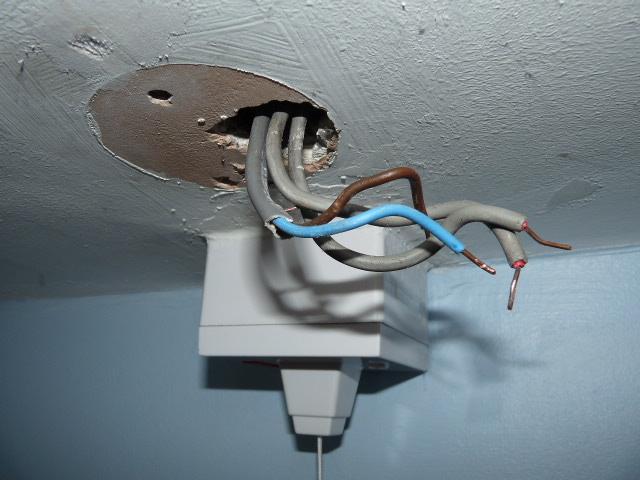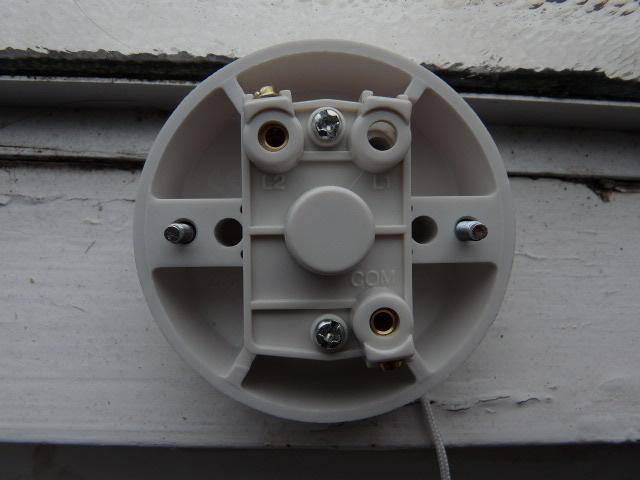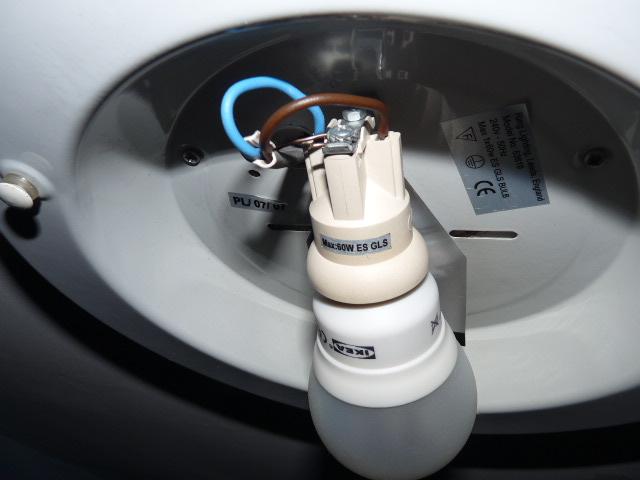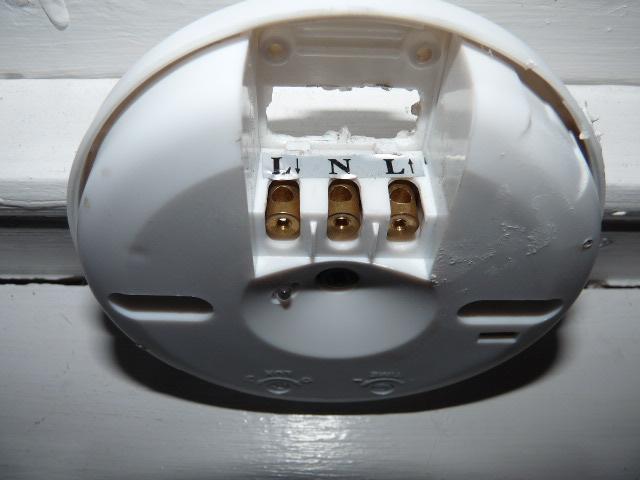I've just moved into a Victorian mid terrace and was trying to replace a PIR sensor in the bathroom with a standard 6A 1-way pull cord light switch. The PIR was driving my wife nuts, coming on and going off at every inconvenient time other than when you wanted it on. It drove her so mad, she gave me an ultimatum - either the PIR went or I went. So I was left with no option. The PIR (made in China) had to go. I unscrewed the sensor and had a look at the wires in the ceiling - I can't figure them for the life of me. In one grey cable there is a blue and brown and a single bare wire, which I'm guessing is the earth - fair enough. But, there are also two separate red wires in grey sleeves, which I'm guessing are two live? I took some advice over the phone from our local neighbourhood electrician, who's busy on a job in some other part of the country, and he told me to tape up the blue neutral (which was needed for the sensor), stick the brown into L1/L2 and the two red into Common. I've done exactly what he said and bingo! Nothing. No light when I pull the switch. What have I done wrong? Can anyone help? It's not fun having no light in the bathroom. That old saying "If you sprinkle when you tinkle..." is starting to wear a bit thin... Pics attached to help make thing clearer.
Bathroom light switch ceiling wires
- diydiv
- 1
T&E and two single reds. WTF? How did that happen? What is that mess?
The pull cord light switch
- diydiv
- 1
6A 1-way. Bought as new from Screwfix. Straight forward, easy peasy - even a child could wire...






